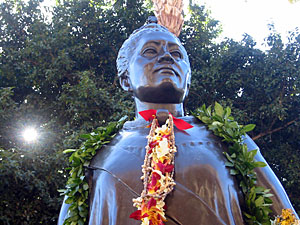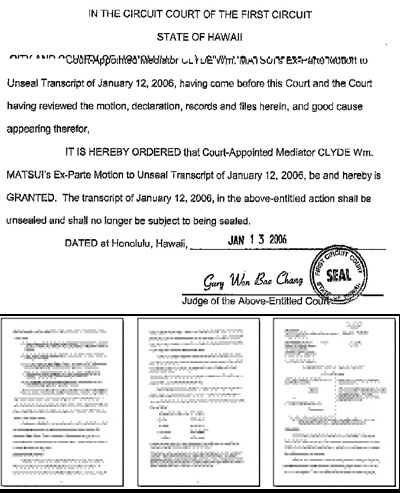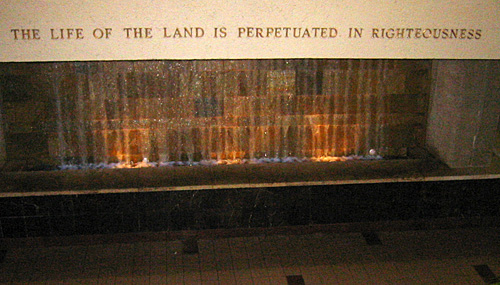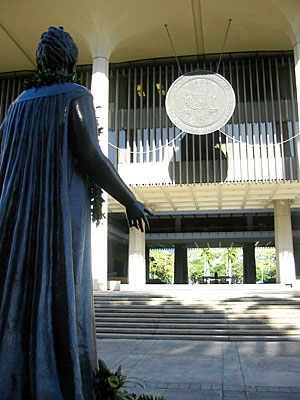|
• Inside the Waimea Settlement Court Statement reveals Mediator Clyde Matsui reports "intense and necessarily hurried negotiations", in a "co-operative and determined effort to 'save the valley'"
Role of the United States Army in closing the deal revealed "...this mission would never have been obtained without the willingness of the Army to truly go above and beyond the call." In an unusual action, Hawai'i's First Circuit Court has released a statement about the final stages, inner workings and details of the recent Settlement of the Waimea Valley case. Civil Case 01-1-03622-12 was settled out of court on January 13, 2006 by the court-appointed Mediator, Clyde Wm. Matsui. After the settlement was announced in front-page news, Mr. Matsui asked the presiding Judge on the case, Judge Gary W.B. Chang, to release a personal note to the public. The complete public document is published here; click the image below to download it.
This 10-page document is a clear example of our system of justice at work for the common good. To the ordinary citizen, the big institutions that collaborated to solve the Waimea problem can often seem faceless, remote, unaware of how ordinary people live, think and feel. In this case they were aware; officials of the State of Hawai'i (Department of Land and Natural Resources), the City (the Council and the Mayor), the Office of Hawaiian Affairs, the National Audubon Society, the Trust for Public Land and the Department of the Army conferred with the Mediator for the First Circuit Court behind the scenes, right through the Christmas holidays. They were moved by what Mr.Matsui describes as "a well-attended and widely-publicized City Council hearing" on December 7 during which there was "a consistent and determined public rejection of any further development of Waimea Valley, however slight or seemingly insignificant. Frequent references were made to the valley as being 'sacred' and 'a treasure.'"
Matsui singles out the Army as key to the final steps in the negotiations, which appeared to have failed at the last minute (page 6). At the urging of Mayor Mufi Hanneman, an additional $2 million, on top of the original $1.5 million already committed, was made available by the Army to close the deal. Matsui says that "...a special expression of appreciation should be directed to the Department of the Army for its further commitment to the cause." If you're curious about why the US Army is putting funds into preserving an environmental and cultural resource in Hawai'i, you're not alone. The Army has a large "Sustainability" program with a fascinating agenda, including "Compatible Use Buffer" -- which funded the Waimea participation. You can read about it on their website. The Army clearly benefits a great deal from the information and advice provided by the national organization, Trust for Public Lands. Read about their fine environmental and cultural work in Hawaii, and across the nation, on their website. There's also a detail not reported publicly so far -- the critical last-minute participation of the State of Hawaii, through Peter Young and the Department of Land and Natural Resources (DLNR). Their willingness to provide a final $100,000 on the last day (pages 6 and 7), to tie up some technical loose ends, was just as vital, though not as visible, as what the Army and all the other players did, and it too should be marked. When leaders and public servants do the right thing, they should be congratulated -- as they should be criticized when they don't. Here are the individuals who were cited by Mr.Matsui in his report above, who participated directly in the Waimea settlement. Click on any of these links to send them a personal message:
Many others, especially the City Council which made this process possible in the first place through their vote on December 7, 2005, also deserve recognition. Click below to send an email message to them:
Here is an email address for Clyde Wm. Matsui himself, and for the Judge, of whom Matsui says, "stated the higher value derived from the case," and that "all who were fortunate enough to be in the courtroom were as moved as I was."
• |
||||||



